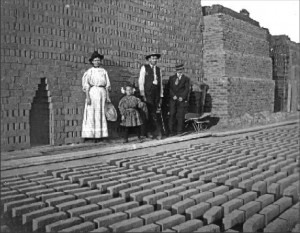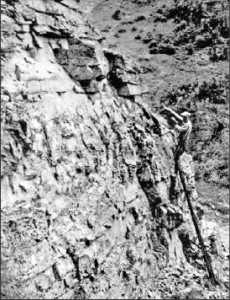by Mike Rosso
Western State College (WSC) in Gunnison is leading the charge statewide in sustainable building practices in an effort to reduce its carbon footprint. The WSC campus is rapidly becoming a model in earth-friendly, energy-efficient building practices and renovation techniques, thanks in no small part to its students, staff, and alumni.
Sowing the early seeds of change at WSC was A World Awakening to Resources and Environment (AWARE), a student organization that introduced recycling projects on campus and helped to create an Environmental Studies minor program in 1993, which was expanded to an academic major by 2000.
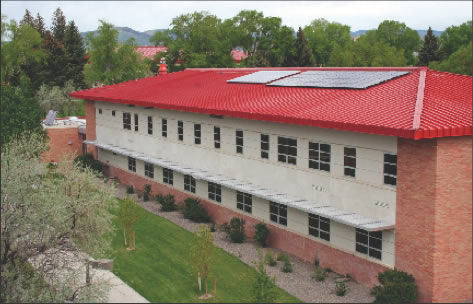
Around the same time, several student environmental groups merged to become the Sustainability Coalition with the goal of becoming a force in student government to exert more influence on decisions regarding the campus’ future. Soon, many faculty members joined in to support efforts to “green-up” the campus.
Student pressure on the administration led to WSC President Jay Hellman signing the American College & University Presidents Climate Commitment Pledge to reduce greenhouse gases 80 percent by the year 2050, but only after assurances from the students that they understood the magnitude of the commitment.
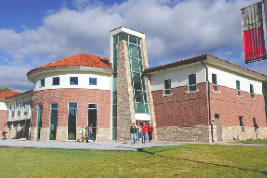
All those efforts paid off as WSC now boasts a variety of Leadership in Energy and Environmental Design (LEED)-certified new construction, and renovation projects.
LEED is an internationally accepted benchmark for the design, construction and operation of “high performance, green buildings” as set by the U.S. Green Building Council. Buildings can earn Bronze, Silver, Gold, or Platinum LEED certifications. The ratings are determined by a point system which rates a building project by potential environmental impacts such as water efficiency and indoor environmental quality.
Let’s take a brief look at some LEED-certified buildings on the WSC campus.
Borick Business Building
The first project on the campus to attain certification was the Borick Business Building which garnered a LEED-silver designation for its state-of-the art “smart” classrooms, equipped with multi-media teaching tools and study spaces for student collaboration and interaction. Environmental features include the re-use of roof tiles on the building taken from the renovation of other buildings on campus, natural light, motion lighting, and an energy-efficient ventilation system. The project was completed in the fall of 2007 at a cost of $6 million. It was also the first building in the entire Gunnison Valley to receive a LEED certification. The Borick Building gained statewide recognition as the only privately funded academic building among the state’s public undergraduate institutions, its financing covered in large part by 1975 WSC graduate, Steven J. Borick, who donated a $3 million challenge grant which was quickly matched by other WSC alumni and friends.
Kelley Hall
In the fall of 2008 Kelley Hall, home to the Behavioral and Social Sciences Department and the Environmental Studies Program, reopened after a $5.5 million renovation which included insulated windows, motion lighting, compact fluorescent lighting, low-flow faucets and a high-efficiency boiler system. Recycled or renewable building materials — cork, bamboo, wood and paper fiber and reclaimed hardwood – were also used in the remodeling – from flooring and furniture to insulation.
The hall, originally built in 1957, is also the first building on campus to employ solar panels for electrical generation and a solar thermal heating system. An Environmental Studies class applied for grants and helped design the solar panel systems, which includes an educational center and laboratory to provide renewable energy data to the community. A touch-screen kiosk is in the works to monitor the overall performance of the alternative technologies and will also be tied to the web so visitors can log on and see live statistics such as the kilowatts per hour generated.
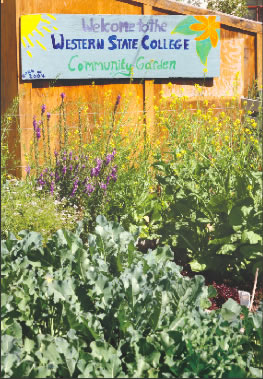
“Students learn from the buildings they study in. In Kelley Hall, our building will be more consistent with the material that we are teaching,” said John Hausdoerffer, director of Environmental Studies at WSC. He’d like to see “the entire campus becoming a learning laboratory for sustainability.”
In 2007, two Environmental Studies students, Loren Ahonen and Mandi Leigh, persuaded the student government to give $15,000 from a “Sustainability Fund” towards the Kelley solar panel system which was matched by the president. Now, for the first time in Western’s history, student fees were being used directly towards “greening up” the campus. Funds from the Governor’s Energy Office Solar Rebate Program were also used for the solar projects.
Students from the Environmental Studies program then planted a low-water, xeriscaped garden using native plants outside the hall. A recycling center is also included in the building. Kelley Hall is currently pending LEED-Gold certification.
The Student Center

Slated to open in January 2010, the 70,000 square-foot former “Student Union” building is currently under construction and seeking LEED-Gold certification.
The old building was demolished and more than 60 percent of the generated waste was recycled locally. More than 25 percent of the materials used in the new construction will be from recycled items. In addition, 94 percent of the building materials used thus far have come from businesses with a 500-mile radius of the campus. The building has also been designed to take advantage of solar gain to help reduce energy consumption and is seeking LEED-Gold certification.
Community Garden
Thanks to the efforts of a group of dedicated WSC students led by alumnus Anthony Troia, the campus boasts a community garden, now in its fourth season. Located between Coronado and Beckwith Halls, the garden produces herbs, vegetables, and flowers. In 2008, greens from the campus garden were sold at the Gunnison Farmers Market with proceeds benefitting the local food bank. Organizers hope to eventually produce food for the dining hall on campus. Plans for a campus greenhouse are also in the works.
Taylor Hall

Scheduled to begin in Summer 2010 is a complete renovation of the oldest building on campus, Taylor Hall. The project will include technology and classroom updates, a redesign of the entryway and provisions to obtain LEED-Gold certification at its completion. Plans for the hall also include using woody “biomass” for a boiler system. Biomass is a is biological material derived from plant waste and burned in near-raw form for heating.
WSC President Helman is excited about the energy-saving transformations taking place on campus. “We are witnessing that it is not so radical to think green.”
For more information please visit:


